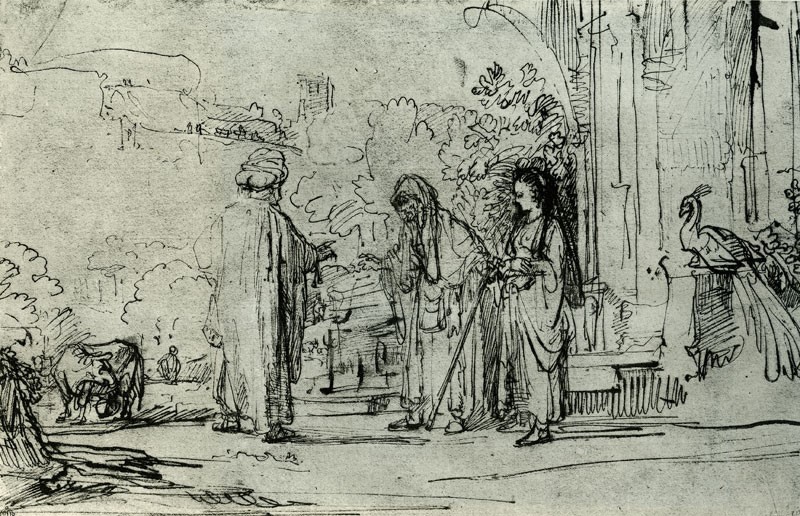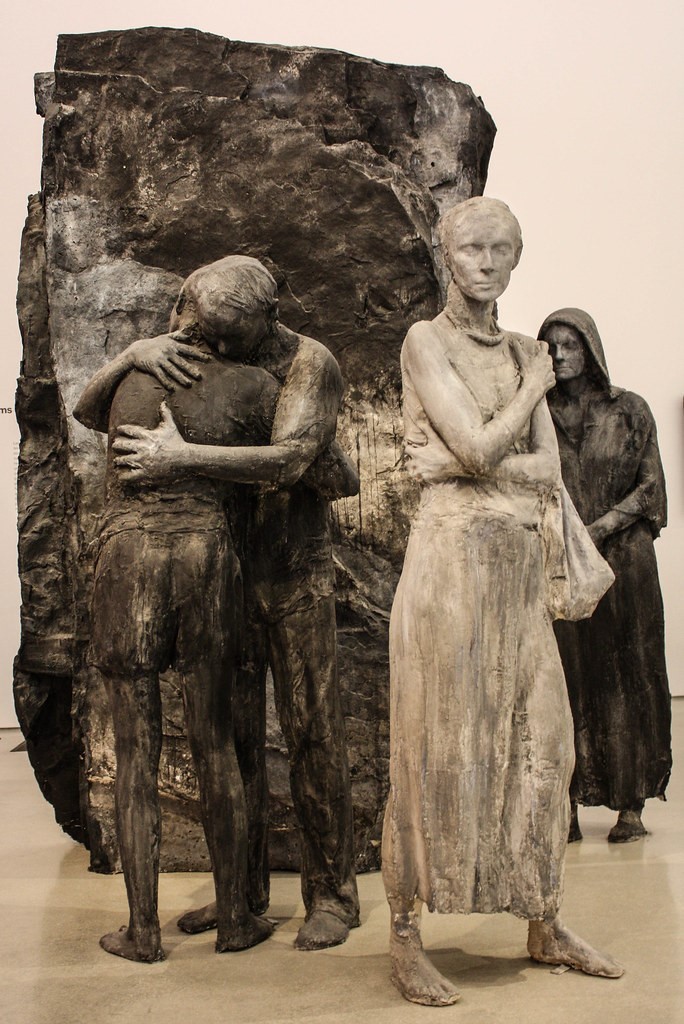March 10thFive Minutes on Friday #63
LENT - Hagar
Two artists powerfully portray this Biblical story.
Rembrandt’s drawing – note the prominence of Abraham, the stooped figure of Sarah, bent, withered and bitter (?) where Hagar appears young and vibrant, full of life.


George Segal's contemporary life-size sculpture helps tell the story. Bodies speak. In this nearly literal interpretation of the scene, Abraham embraces the departing Ishmael. The title of the sculpture, "Abraham's Farewell to Ishmael," indicates that the two men are the main subject of the sculpture. The farewell is heartbreaking. Abraham's bent posture, his face turned down into Ishmael's shoulder, the position of the hands—all express Abraham's immense grief. But Segal deflects attention from the grief of the two men by including figures of the two women whose conflict frames and encompasses the sorrow. In the foreground stands Hagar. She looks past us, unable to look behind her, holding the goatskin of water, and embracing herself in a self-protective gesture that parallels Abraham's embrace of their son. She stares into the wilderness, stoically holding back rage and fear. In the background stands Sarah. A large rock separates her from the rest of the family. She leers out at them, a silent, unfriendly witness to the scene. Whereas in Rembrandt's drawing Abraham holds the power in the family, in Segal's sculpture, Sarah is the controlling figure. Her fear and jealously destroy the family. The women surround the men and their separate sufferings both cause and intrude upon Abraham's loss.
BEATITUDES – Matthew 5.9
‘Blessed are the peacemakers, for they will be called children of God.’
Wonderful news for the peacemakers! You’ll be called God’s children.
“The spirit of the age blesses those who are great at waging war—
Jesus blesses those who have the patience to work for peace.” [B. Zahnd]
The word ‘peace’ (shalom in Hebrew) is not a negative state, that is merely the absence of war or strife. It is a positive word which has to do with the well-being of another. To be a peacemaker is to work for right relations with all persons and with the earth.
The OT vision of shalom is a rich one. One of my favorite visions of shalom is found in Zechariah 8.4-5…
The Lord of heavenly forces proclaims:
Old men and old women will again dwell in the plazas of Jerusalem. Each of them will have a staff in their hand because of their great age. 5 The city will be full of boys and girls playing in its plazas.
OT scholar, Elizabeth Achtemeier writes of this text:
“The kingdom here comes not in images of power and glory, but in images of rest and play, and freedom for all ages.
What is the kingdom of God? It is a public park! It is a park where old people are no longer cold and lonely and ill and senile, but participants in the community. It is a public park where the elderly can sit together and bask in the sun, and talk and laugh over the good old days in full vigor and clear mind and satisfaction of life.
The kingdom of God is a public park where little children can run and play in the town squares, in safety and fun and delight. A place where no child is ever abused or bullied or shunned. The kingdom of God is a public park where the streets are safe for children all the time.
This is why Christians pray, ‘Thy kingdom come on earth, even as it is in heaven.’”